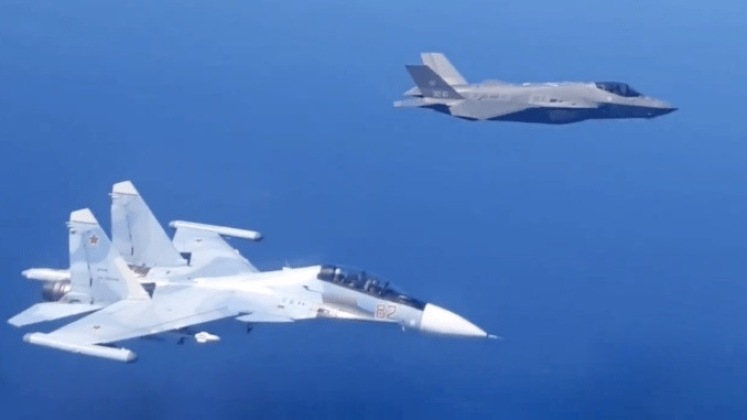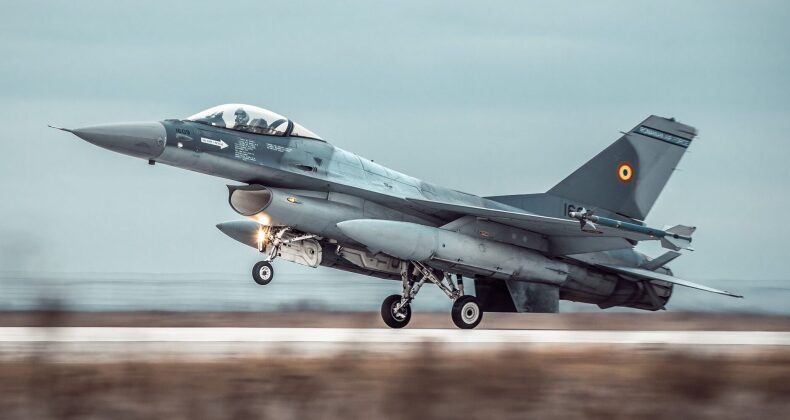News
Sweeping Aside All Competition: F-35 Continues to Take Europe By Storm With New Clients and Localised Production
The Lockheed Martin F-35A fifth generation fighter developed for the United States Air Force has continued to gain new contracts across the European continent, with a growing number of countries far beyond the aircraft’s limited number of initial program partners placing orders for the fighters. Having gained orders across Western Europe, including from Switzerland and Germany in 2021 and 2022 the latter which initially showed signs of reluctance to acquire the jets, F-35s have gone on to proliferate across lower income Eastern European countries near NATO’s frontlines with Russia. In the final week of September the Czech government approved a plan to buy 24 of the fighters under a contract valued at approximately $6.5 billion, with Prime Minister Petr Fiala stating that the aircraft would begin deliveries in 2031 and all would be delivered by 2035. “For our defence, it is important to boost our ties with NATO allies,” he stated, adding that by acquiring the stealth jets: “we are telling our allies that we take the defence of our country seriously and that they can count on us.” The U.S. State Department had approved the sale in June, with the very long 11 year delivery time being a result of both the large backlog of orders from across the world for the fighters and serious issues with production causing repeated delays.

Regarding the rationale for acquiring F-35s the prime minister elaborated: “In comparing the capabilities of the aircraft and their service life with the price, there is no better solution for fulfilling the tasks of the tactical air force of the Army of the Czech Republic for the next decades.” The acquisition is by far the largest in the country’s history. The stealth jets will replace the Czech Air Force’s very small fleet of 14 Gripen fourth generation fighters currently being leased from Sweden. Not only is the F-35 a significantly more complex aircraft, but it is also approximately twice the size of the Gripen and requires several times as many maintenance hours for each hour in the air, meaning the operational costs the Czech Air Force’s fleet will face will increase manifold. With fourth generation fighters facing growing obsolescence against high end threats, however, the F-35 as the only fifth generation fighter in production in the Western world effectively has no competition with no other NATO compatible fighter boasting comparable capabilities.

Closely coinciding with the approval of a Czech order, the Romanian Defence Ministry in late September submitted a request to parliament for permission to buy 32 F-35As, which would also be the largest arms purchase in the country’s history. The Romanian Air Force currently relies on F-16 fighters built during the Cold War and purchased second had from Portugal and Norway, with these older aircraft expected to be retired in the early-mid 2030s. The Defence Ministry had previously shown a strong preference for fighters with low operational costs over more capable ones, with the Air Force retiring its more advanced MiG-23 and even its then state of the art MiG-29 fighters in the aftermath of the Soviet Union’s disintegration, while keeping older MiG-21s in service which were far cheaper to operate. This made the choice of the F-35, which has by far the highest operational costs of any single engine fighter, somewhat surprising.
Chief of the General Staff of Romanian Defence Forces Daniel Petrescu stated regarding the purchase of F-35s: “We know it takes a long time to operationalise such a capability. What we propose is to start now and in the perspective of the 2030s, when the F-16 planes we have will exhaust their resource, to be able to switch to the new type of plane.” Bordering Ukraine, the political future of which remains highly uncertain, Romania’s acquisition of F-35s, alongside similar purchases by states across the region such as Poland, will place significant further pressure on Russian air defences, with the fighter’s advanced stealth capabilities making it particularly difficult to defend against.

While Eastern European states have placed orders for F-35s more recently, Northern Europe has been among the fastest regions to adopt the aircraft. Norway in 2021 became the first country in the world to field a fleet formed entirely of fifth generation fighters, while Denmark received its first F-35s in late September 2023 and Finland placed its first orders for the aircraft in December 2021. All three countries will rely on F-35s to replace either F-16s or F-18s, dampening Swedish hopes to export the Swedish-American Gripen fighter to its neighbours. A key impediment to acquisitions in Western Europe has been the low defence budgets of economically less developed southern states, with Spain and Portugal in particular seeing their ability to afford F-35s brought to question.
Another more minor impediment to the F-35’s proliferation in Europe has been France’s refusal to consider foreign fighter classes and its extensive efforts to promote its indigenous Rafale fourth generation fighter on the continent, albeit with very limited success. Rafale sales to Greece and Croatia were achieved in the former case by providing the first aircraft free of charge, and in both cases by offering second hand aircraft which was necessary to make the aircraft price competitive with F-35 – which is otherwise widely considered a more cost effective aircraft. Extensive efforts by Paris to lobby third parties such as Belgium against buying the F-35 have notably consistently failed. With the number of European F-35 clients expected to continue to grow rapidly, Germany and the United States in 2023 began cooperating to produce the aircraft’s fuselages under license in Germany in facilities which could also offer servicing to F-35s across the continent. While under the preceding administration of Chancellor Angela Merkel Defence Minister Karl Mullner was forced to resign due to his strong support for an F-35 acquisition, the new Olaf Scholtz’s administration’s about turn on the issue at the expense of the German led Eurofighter program in early 2022 was a major turning point for the American aircraft’s proliferation in Europe.












